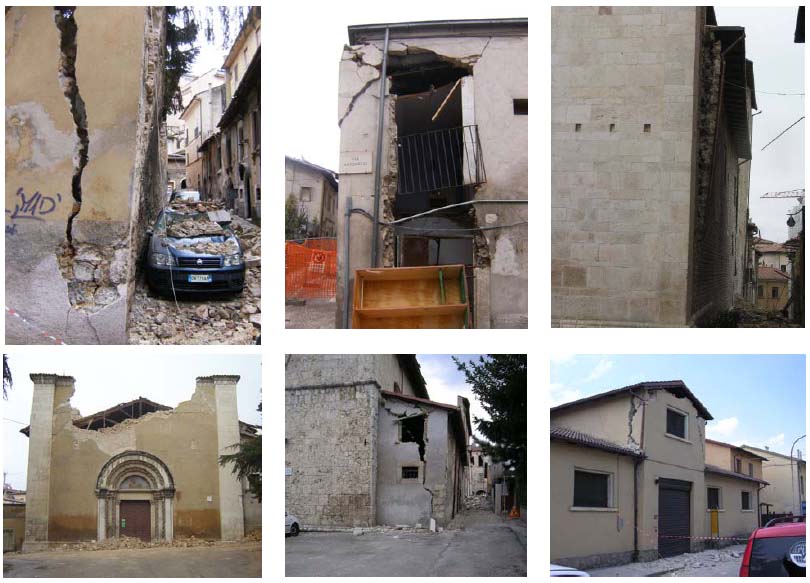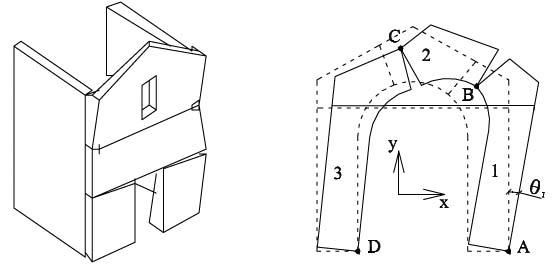Introduction
Local collapse mechanisms, mainly related to out-of-plane wall response, are commonly observed in existing masonry buildings subjected to earthquakes. In such structures, the lack of proper connections between orthogonal walls and between walls and floors does not allow to develop a global box-type behavior of the building, which would be governed by the in-plane response of walls and floors.
Fig. 1: Evidences of local collapse mechanisms in masonry structures, observed after the recent earthquake of L’Aquila (2009).
Fig. 2: Example of a local mechanism (a), often observed in reality during earthquakes (b) and its experimental reproduction (c) [Restrepo-Velez, 2004].
Fig. 3: Examples of local failure modes in masonry structures that can be modeled as a kinematic chain of rigid bodies
Goals and methods
Possible research developments related to this issue could be based on the following activities:
- Use of modeling techniques, such as for example XFEM or FEM/DEM to simulate the results of static experimental tests on masonry structural elements
- Use of modern commercial finite element codes (e.g. Abaqus) to model and simulate specific geometries of local failure mechanisms under dynamic loading conditions, trying to numerically simulate experimental evidences and compare advanced numerical predictions with the results of simplified schemes
- Use of rigid body dynamic tools, such as for example Working Model or SimMechanics (in the Matlab framework) to reproduce experimental results related to local failure mechanisms occurred in masonry structures. The results also need to be compared to those obtained with the other approaches previously introduced.
Acknowledgements
- European Centre for Training and Research in Earthquake Engineering (Eucentre), Masonry and Monumental Structures Area, Dott. A. Penna and Dott. M. Rota




